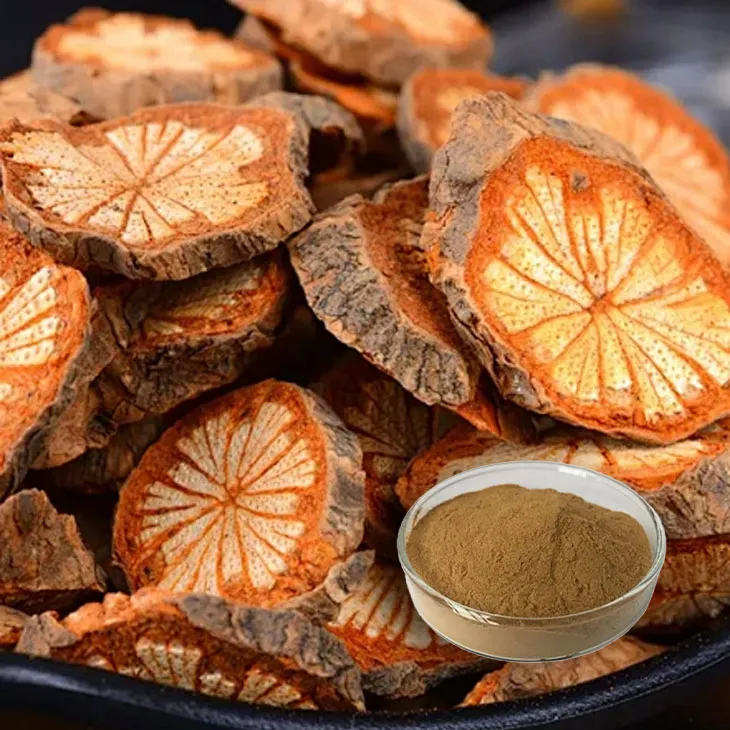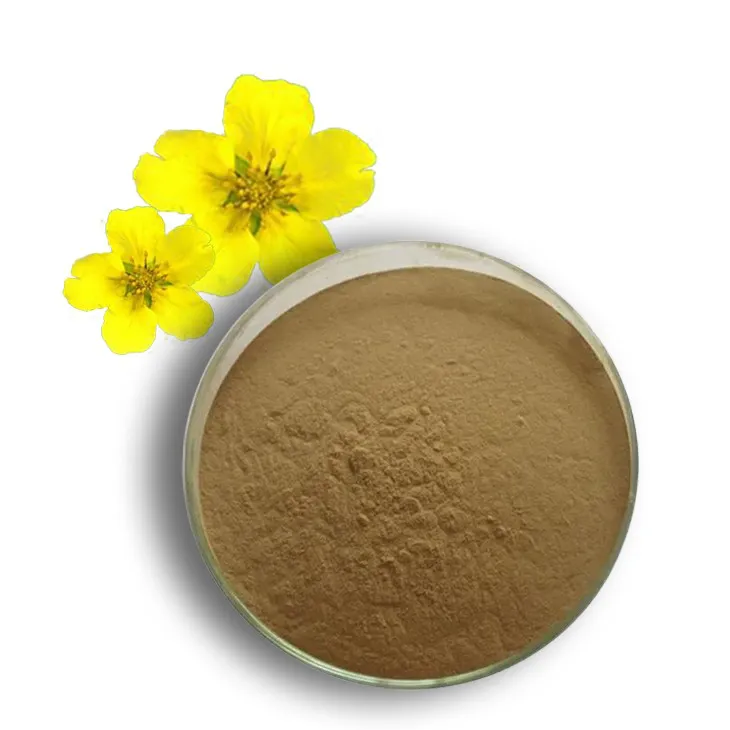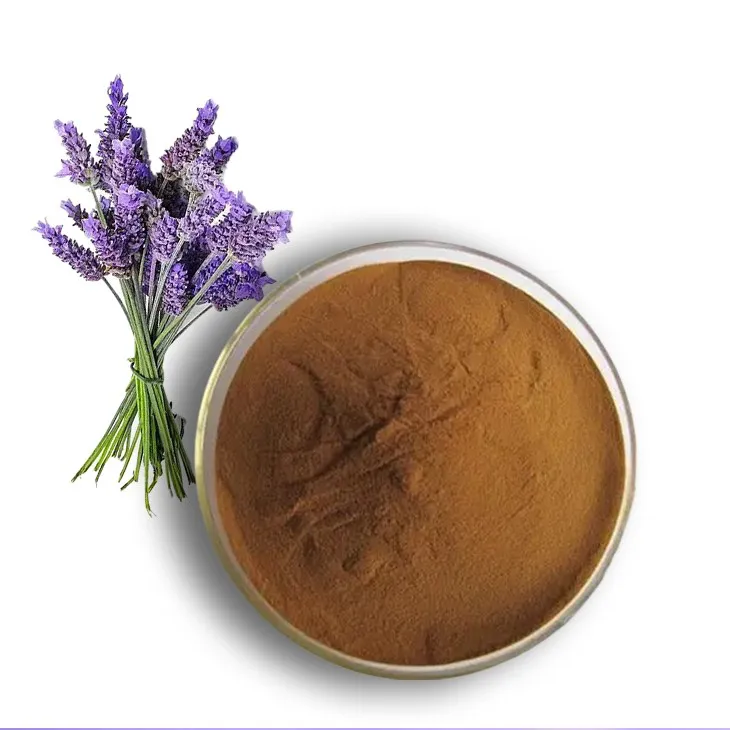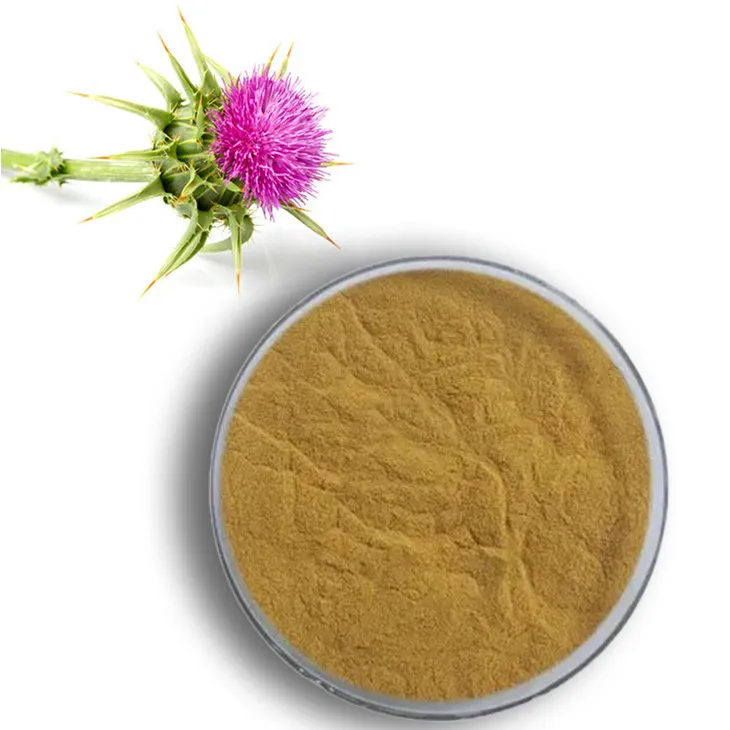- 0086-571-85302990
- sales@greenskybio.com
Science Meets Nature: A Review of Research Studies and Clinical Trials on Red Vine Extract
2024-07-04

1. Introduction
Red Vine Extract has emerged as a topic of significant scientific exploration in recent years. Nature has provided us with this plant - based substance, and now science is delving deep into its properties and potential applications. This review aims to comprehensively analyze the research studies and clinical trials centered around Red Vine Extract.

2. Chemical Composition of Red Vine Extract
2.1. Polyphenols
Red vine extract is rich in polyphenols. These are a class of chemical compounds that play a crucial role in its biological activities. Polyphenols such as resveratrol are among the most well - known components. Resveratrol has been the subject of numerous studies due to its potential antioxidant and anti - inflammatory properties. It is believed to contribute significantly to the overall health - promoting effects of red vine extract.2.2. Flavonoids
Another important group of compounds in red vine extract is flavonoids. These include Quercetin, catechin, and epicatechin. Flavonoids are known for their antioxidant capabilities. They help in scavenging free radicals in the body, which are associated with various diseases and aging processes. The presence of flavonoids in red vine extract gives it an edge in terms of potential health benefits.
3. Potential Health Benefits
3.1. Antioxidant Properties
The antioxidant properties of red vine extract are one of its most significant features. Free radicals are constantly generated in our bodies through normal metabolic processes as well as due to environmental factors such as pollution and radiation. These free radicals can cause damage to cells, proteins, and DNA. Red vine extract, with its rich content of polyphenols and flavonoids, acts as a powerful antioxidant. It can neutralize free radicals, thereby reducing the risk of oxidative stress - related diseases such as cancer, cardiovascular diseases, and neurodegenerative disorders.3.2. Anti - inflammatory Properties
Inflammation is a natural response of the body to injury or infection. However, chronic inflammation can lead to various health problems. Red vine extract has been shown to possess anti - inflammatory properties. It can modulate the body's inflammatory response by inhibiting certain inflammatory mediators. For example, it can reduce the production of cytokines such as interleukin - 6 (IL - 6) and tumor necrosis factor - alpha (TNF - α). This anti - inflammatory effect makes it a potential candidate for the treatment of inflammatory conditions like arthritis and inflammatory bowel disease.
4. Applications in Treating Medical Conditions
4.1. Cardiovascular Health
- Red vine extract has been studied for its potential benefits in cardiovascular health. It may help in reducing blood pressure. Some clinical trials have shown that regular consumption of red vine extract can lead to a modest decrease in systolic and diastolic blood pressure. - It also has an effect on blood lipid profiles. It can potentially lower levels of LDL (low - density lipoprotein) cholesterol, often referred to as "bad" cholesterol, while increasing levels of HDL (high - density lipoprotein) cholesterol, the "good" cholesterol. This lipid - modulating effect can contribute to a reduced risk of atherosclerosis and coronary heart disease.4.2. Diabetes Management
- In the context of diabetes, red vine extract may play a role in improving insulin sensitivity. Insulin resistance is a key factor in the development of type 2 diabetes. By enhancing insulin sensitivity, red vine extract can help the body's cells to better respond to insulin, which in turn can help in regulating blood glucose levels. - Some studies have also suggested that it may have an impact on the prevention of diabetic complications. For example, it may help in protecting the blood vessels and nerves from the damage associated with long - term diabetes.4.3. Skin Health
- The antioxidant and anti - inflammatory properties of red vine extract make it beneficial for skin health. It can protect the skin from damage caused by UV radiation and environmental pollutants. - It may also have an effect on skin aging. By reducing oxidative stress and inflammation in the skin, it can potentially slow down the appearance of wrinkles and improve skin elasticity. Some cosmetic products are now incorporating red vine extract as an ingredient for these potential benefits.5. Clinical Trials on Red Vine Extract
5.1. Methodology of Clinical Trials
- Clinical trials on red vine extract vary in their design. Many are randomized, double - blind, placebo - controlled trials. In these trials, participants are randomly assigned to either a treatment group that receives red vine extract or a placebo group. The double - blind aspect means that neither the participants nor the researchers know which group is receiving the treatment until the end of the study. This helps to minimize bias. - The dosage and duration of treatment also vary across trials. Some trials may use a low - dose regimen for a short period, while others may use a higher dose for a longer duration. These differences in methodology can impact the results and the interpretation of the effectiveness of red vine extract.5.2. Results of Clinical Trials
- In cardiovascular - related trials, some have shown positive results in terms of blood pressure reduction and improvement in lipid profiles. For example, a study involving a group of hypertensive patients found that after 12 weeks of treatment with red vine extract, there was a significant decrease in blood pressure compared to the placebo group. - In diabetes - related trials, the results have been somewhat mixed. While some studies have reported improvements in insulin sensitivity, others have not shown a significant effect. This may be due to differences in the patient populations, the dosages used, or the duration of the trials. - Regarding skin health, clinical trials are still in the early stages. However, some preliminary studies have shown promising results in terms of skin protection from UV damage and improvement in skin texture.6. Conclusion
Red vine extract has shown great potential in terms of its chemical composition, potential health benefits, and applications in treating various medical conditions. However, more research is still needed. The results of clinical trials, while showing some positive trends, also highlight the need for further investigation to better understand the optimal dosage, duration of treatment, and long - term effects. As science continues to meet nature in the study of red vine extract, it is hoped that more conclusive evidence will be obtained, leading to its wider application in the field of medicine and health promotion.
FAQ:
What is the main chemical composition of red vine extract?
Red vine extract contains various compounds. It is rich in polyphenols, such as resveratrol, proanthocyanidins, and flavonoids. These components contribute to its potential antioxidant and other beneficial properties.
What are the antioxidant properties of red vine extract?
The antioxidant properties of red vine extract are mainly due to its polyphenolic content. These compounds can scavenge free radicals in the body, which are unstable molecules that can cause damage to cells. By neutralizing free radicals, red vine extract may help protect cells from oxidative stress and reduce the risk of certain diseases associated with oxidative damage.
How does red vine extract show anti - inflammatory effects?
Red vine extract may exhibit anti - inflammatory effects through multiple mechanisms. Some of its components can interfere with the inflammatory pathways in the body. For example, they may inhibit the production of pro - inflammatory cytokines and enzymes that are involved in the inflammatory response. This can potentially help in reducing inflammation in various tissues and organs.
What medical conditions can red vine extract be used to treat?
Red vine extract has been studied for its potential use in treating several medical conditions. It may have applications in cardiovascular health, as it could help improve blood circulation and reduce blood pressure. Additionally, it may also play a role in managing certain skin conditions due to its antioxidant and anti - inflammatory properties. However, more research is still needed to fully establish its effectiveness in treating these conditions.
How are the clinical trials on red vine extract designed?
The design of clinical trials on red vine extract typically involves several aspects. First, a clear study population is defined, which could include patients with a specific medical condition or healthy volunteers. Then, different doses of red vine extract are administered, and the trial may be placebo - controlled to compare the effects of the extract with a placebo. Outcome measures are selected, such as changes in physiological parameters (e.g., blood pressure, lipid levels) or symptoms related to the studied condition. The duration of the trial also varies depending on the nature of the research question.
Related literature
- Title: Antioxidant and Anti - Inflammatory Properties of Red Vine Extract: A Comprehensive Study"
- Title: "Red Vine Extract in Cardiovascular Health: Results from Clinical Trials"
- Title: "The Chemical Composition and Biological Activities of Red Vine Extract"
- ▶ Hesperidin
- ▶ Citrus Bioflavonoids
- ▶ Plant Extract
- ▶ lycopene
- ▶ Diosmin
- ▶ Grape seed extract
- ▶ Sea buckthorn Juice Powder
- ▶ Fruit Juice Powder
- ▶ Hops Extract
- ▶ Artichoke Extract
- ▶ Mushroom extract
- ▶ Astaxanthin
- ▶ Green Tea Extract
- ▶ Curcumin
- ▶ Horse Chestnut Extract
- ▶ Other Product
- ▶ Boswellia Serrata Extract
- ▶ Resveratrol
- ▶ Marigold Extract
- ▶ Grape Leaf Extract
- ▶ New Product
- ▶ Aminolevulinic acid
- ▶ Cranberry Extract
- ▶ Red Yeast Rice
- ▶ Red Wine Extract
-
Soy Extract
2024-07-04
-
Moringa powder
2024-07-04
-
Almond Extract Powder
2024-07-04
-
Tormentil Extract
2024-07-04
-
Cactus Extract
2024-07-04
-
Lavender Extract
2024-07-04
-
Milk Thistle Extract
2024-07-04
-
Oat Straw Extract Powder
2024-07-04
-
Bitter Melon Extract
2024-07-04
-
Motherwort Extract
2024-07-04





















